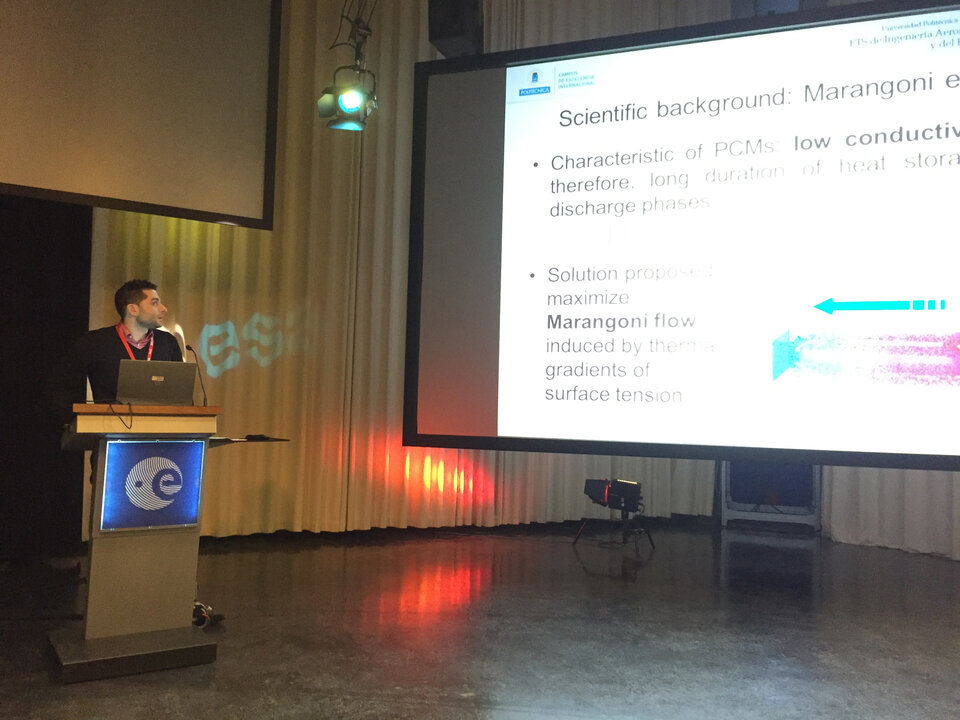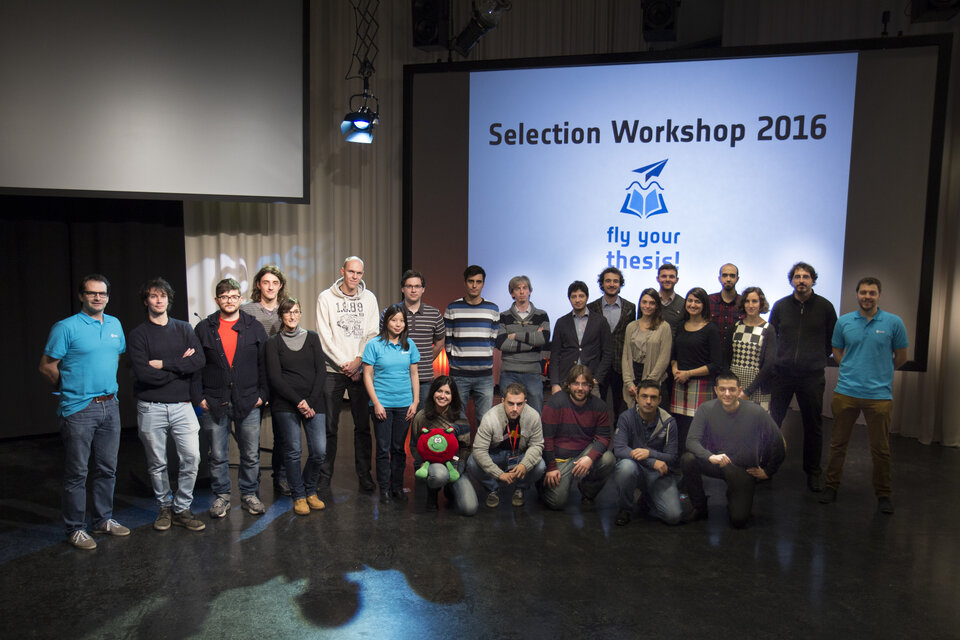Fly Your Thesis! 2016 teams selected
Last week, the Fly Your Thesis! Selection Board (ESA Eduation, ESA Human Spaceflight and Operations, the European Low Gravity Association (ELGRA) and Novespace) selected the final four teams to be given the opportunity to fly their experiment during ESA Education’s Fly Your Thesis! ‘hands-on’ programme for university students.
Last summer, ESA Education reinitiated the popular parabolic flight campaign for students with an announcement of opportunity published on the web. Due to time constraints for necessary ethical approvals, no medical experiments were considered but despite this restriction, some 18 teams from all over Europe vied for the four positions in Novespace’s new Airbus A310. After a rigourous review process, the Selection Board whittled the number down to six. The six finalist teams were asked to present their ideas in detail to the Selection Board in a face-to-face meeting.
The 6 student teams came to ESA’s technical heart, the European Space Research and Technology Centre (ESTEC) in Noordwijk, The Netherlands for two days and were first treated to a broad overview of ESA’s activities. This included a talk from ESA astronaut André Kuipers about his experiences in microgravity as well as a presentation of Rosetta’s story with updates on the latest status and data from Mark McCaughrean, ESA’s Senior Scientific Advisor. It wasn’t all fun and frolics however, students’s appetites for parabolic flights were seriously whetted with presentations from ESA’s parabolic flight campaign manager, ELGRA and Novespace.

The following day, students took it in turns to present their project ideas to the Selection Board who subsequently asked pertinent questions regarding the science, the engineering and the feasibility behind each proposed student project.
Following a lengthy discussion the very next day, the Selection Board eventually came to a concensus as to which teams should be invited to develop their experiment for the Fly Your Thesis! 2016 campaign. The teams are:
CFVib, (Control of Fluids in Microgravity with Vibrations), from Escuela Técnica Superior de Ingenería Aeronáutica y del Espacio (ETSIAE) of Universidad Politécnica de Madrid (UPM). This team will investigate the complex behaviour of liquids in microgravity in the presence of low amplitude, high frequency vibrations in a weightless environment.

PoliTethers team from Politecnico di Milano, proposed a project called SatLeash which aims at characterizing the dynamics of fixed length tethered-systems between two bodies in microgravity. This is extremely important whilst modelling attempts to de-orbit defunct spacecraft or similar debris from space with specifically designed spacecraft ‘tugs’.
Anemoi4 team from University of Duisburg-Essen’s Physics Faculty, put a project together they call Wind Induced Dust Movement in Low-Gravity Location (WINDMILL). Anemoi4 will be building a highly complex centrifuge able to replicate Martian gravity in the microgravity environment of the aircraft and re-create the Martian atmosphere to better understand dust particle behaviour - thus giving valuable scientific insight into formation of the famous Martian dust devils.
TEPiM team (Thermocapillary Effects in PCMs in Microgravity), also from Escuela Técnica Superior de Ingenería Aeronáutica y del Espacio (ETSIAE) of Universidad Politécnica de Madrid (UPM) intend to verify their model of Phase Change Materials when liquated in a microgravity environment when three states of matter co-exist. Characterising marangoni effect in PCMs in microgravity will halp design more effective temperature control for future space applications.

The teams will soon go to Bordeaux in France to visit the Novespace premises and to familiarise themselves with the plane that will provide them with a total of 30 minutes of microgravity in autumn 2016.
If interested in parabolic flight opportunities for students, check the ESA Education web pages for a new announcement of opportunity early next year. Also, on the same pages you can follow the teams’ progress and updates in the Fly Your Thesis! 2016 campaign.
For more information contact: FlyYourThesis @ esa.int






